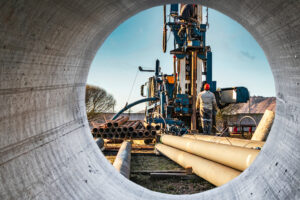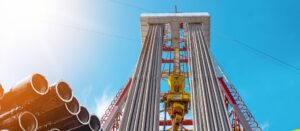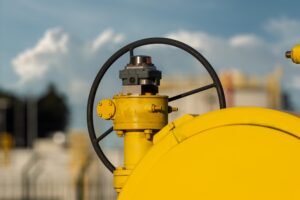If you’re wondering how lifting bails work, read on to understand their importance. People are familiar with the term “the straw that broke the camel’s back” and how it relates to the concept that very small things can derail very large projects. In the case of an oil, gas or water drilling rig, everything depends on the successful insertion of the drill pipe sections down into the well, followed by the equally important removal of the various sections. There is simply no worse catastrophic failure in the industry than the act of getting pipe stuck in the well.
This leads to the loss of valuable pipe stock and can even result in abandonment of an expensive and virtually complete well. As disastrous as that would be, it is only half the calamity because it will still be necessary to drill another well in place of the failed effort. Needless to say, there is a lot of incentive for a water-well driller to take care that he gets his pipe sections in and out safely.
Naturally enough, as form follows function, the water-well drilling industry has developed a series of specialized products that are designed to defeat these obstacles. Among these unique solutions are the drill pipe protectors known as lifting bails.
The weakest point of the drill pipe sections lies in their ends, where male and female threaded ends are screwed together. While these pipe sections are made out of very solid material, it is still possible to bang up the threads so that sections cannot screw together. A driller can also meet with the occasional failure known as thread shear, where the threads themselves strip away.
Using a lifting bail on the pipe ends serves as a secure thread protector. The role of lifting bails is applied once you screw them onto the threaded ends of the pipes. They prevent any damage to the threads as the pipe is moved around. Of course, preventing damage is only part of the job for a lifting bail. Getting long lengths of pipe up onto the rig requires a firm mount in order to hoist it into position. For this purpose, lifting bails have an elongated ring, or bail, built onto the top of the thread protector. This anchor point allows the pipe to be hitched onto a hoist and lifted safely into position.
Given the successive lengths of pipe being assembled together, a lifting bail carries an incredible amount of weight. Bails, therefore, need to be constructed out of the finest tool stock and subjected to the most rigorous quality control standards during the manufacturing process.
Failure of this one seemingly insignificant part can cause massive distress all down the line in any drilling operation. That is why the specialized manufacturers of these drill pipe protectors take such care in producing them. If even a single lifting bail causes a delay in drilling due to a failure of any sort, it’s very unlikely you’ll get to redeem the error. Some things in life simply have to work right the first time and all the time.
Here at MSI we know that quality is extremely important. We test our products in-house and make absolutely certain that our products meet API guidelines. Our lifting bails are sure to get the job done well. Contact us today with any questions.




